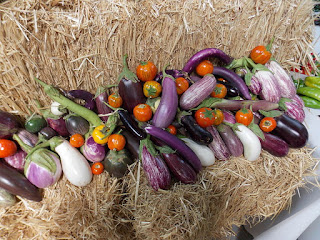Let's start from soaking cut liver in some milk. I like to do this because milk takes out strong metal flavor of blood and makes the final product more gentle. You can leave it for up to 2 hours, but 30 minutes is, actually, enough time.
Meanwhile, let's prepare the side. The accompaniment is one more reason to love liver, because you can chose any vegetables or starches that you like and it will be a good suit to this protein which is rich in B-vitamins . I like potato today and want to roast it with garlic. If you agree, you want to take some waxy yellow potatoes that is not big in size, wash them well and cut in bite-size pieces. Then toss cut potatoes with olive oil, minced garlic, salt, and pepper; I like to add dry thyme and basil as well. Next, put it in the oven for 30-40 min for 350*F (time depends on size of your potatoes).
Hit in saute pan olive oil with ground black pepper and dry oregano for a couple minutes and add well drained liver with sliced onion. Onion is the key - you want it a lot. For 1 pound of liver I put 2 pretty big heads of yellow onion.
Leave it alone, mixing occasionally, and go to make some fresh salad. Green cabbage with fresh chive, dill and arugula is what I like. You can like something else, but remember that baked potatoes and rich hot liver will ask you about some greens anyway.
Believe or not but liver already done - all process of frying takes about 15 minutes. You can serve it when extra moisture evaporate and onion become golden-brown color.
Bon appetite!



























































